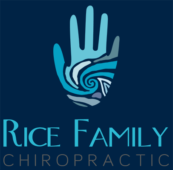Hidden sugars and your health: What to avoid and how to get there

Hidden sugars and your health: What to avoid and how to get there
When we choose to live a healthy lifestyle, one of the first things we do is find ways to reduce our sugar intake. The low hanging fruit here is fairly obvious (and no it’s not fruit)—cookies, candies, pastries, pop and so on. No one would be surprised to hear that any of these are full of sugar and should be avoided as much as possible. Once you’ve removed or reduced these from your diet you should feel pretty good about yourself, right? Not so fast. There are a lot of other foods we commonly consume that contain a lot of “hidden” sugars. Many of these foods might even be considered relatively healthy!
The trouble with sugar is that it’s in so many foods, sometimes added during the manufacturing process, but oftentimes found naturally in the fruits and veggies we eat. Sugar is like the cat in the song Fred Penner made famous,The Cat Came Back. It’s tough to get rid of and just keeps coming back.
Health professionals typically tell us that the recommended daily sugar intake 5% of your daily caloric intake, and ideally no more than 10%. For a diet consisting of 2000 calories, that’s somewhere between 25 and 50 grams of sugar per day. Now consider that there are about 21.5 grams of sugar in a single cup of butternut squash. That doesn’t leave much room for treats, does it?
The fact is, a lot of otherwise healthy foods do contain sugars that add to our daily sugar intake. Corn? 20 grams per cup. Sweet peas? 10 grams per cup. Neither is a particularly great choice of vegetable in an uber healthy diet. Even 1 cup of spinach contains a gram of sugar.
Added sugars in processed foods are a much bigger problem in that they have so little else going for them and tend to not just contain sugar but are usually heavily coated with added sugars. So just a couple of those items at the movie theatre or in the processed foods sections of the grocers tend to send our daily consumption of sugar soaring.
And soar they do: According to one study, in 2008, people in the US were consuming 76.7 grams of added sugar per day, which equals 19 teaspoons or 306 calories. In 2012, the average adult intake was 77 grams per day. The story in Canada isn’t much different. In 2008 Canadians consumed an average of 64.3 grams of added sugar per day, compared with 58.5 in 2016.
The good news is that more and more parents are taking the time to read the labels on foods like yogurt, instant breakfasts, so-called energy drinks and their beloved spiced pumpkin latte. The bottom line is that they all contain more sugar than needed. (Since when does spaghetti sauce need sugar?!) But foods like iced tea, granola bars and Spaghetti-Os are just the tip of the fructose-coated iceberg.
The science behind sugar’s toxic effects on the body is still pretty new. Sugar is an inflammatory, leads to obesity, insulin resistance and increased gut permeability. A study of 29 healthy people found that those consuming only 40 grams of added sugar from 1 can of soda per day had an increase in many of the above including LDL cholesterol.
Sugar has also been shown to be dangerous for those fighting cancer. While the research fully explaining sugar’s role in the fight against cancer isn’t quite there yet, the point is this: sugar doesn’t help. At the very least sugar contributes to obesity in various parts of the body, and there are clear connections between obesity and cancer. Scientific evidence shows that being overweight or obese increases the risk of 13 different types of cancer. After smoking cigarettes, obesity is the single biggest preventable cause of cancer. Less sugar means fewer calories. Fewer calories means less obesity. Less obesity will lead to fewer cases of cancer.
So what can a health conscious person do? The best place to start is awareness. Understanding what the problem is and finding the hidden sugars in your diet is a great first step on the road to purging the excess sugar in your diet.
Another way to reduce sugar intake is to replace it with healthier substitutes such as stevia, monk fruit, chicory root or coconut sugar. At the end of the day, your best bet is to steer your ship toward lowering your dependence on sweet foods and find the joy in foods that are naturally delicious without added sweetness: crisp fresh fruits, crunchy chopped veggies, aromatic nuts and savoury seafood are all great places to begin!
At Rice Family Chiropractic we encourage a holistic approach to life. That means living in a way that is natural to you and the world we live in. A holistic lifestyle benefits us on many levels: Physical, emotional, mental and spiritual. If you have any questions about this, or any aspect of your spinal health, please call us today to book an appointment. We look forward to seeing you!
Rice Family Chiropractic
Wellness from our family to yours.
Dr. Erin and James Rice
#310-6525 204 Street
Langley, BC V2Y 3B3
604 539 0542


















